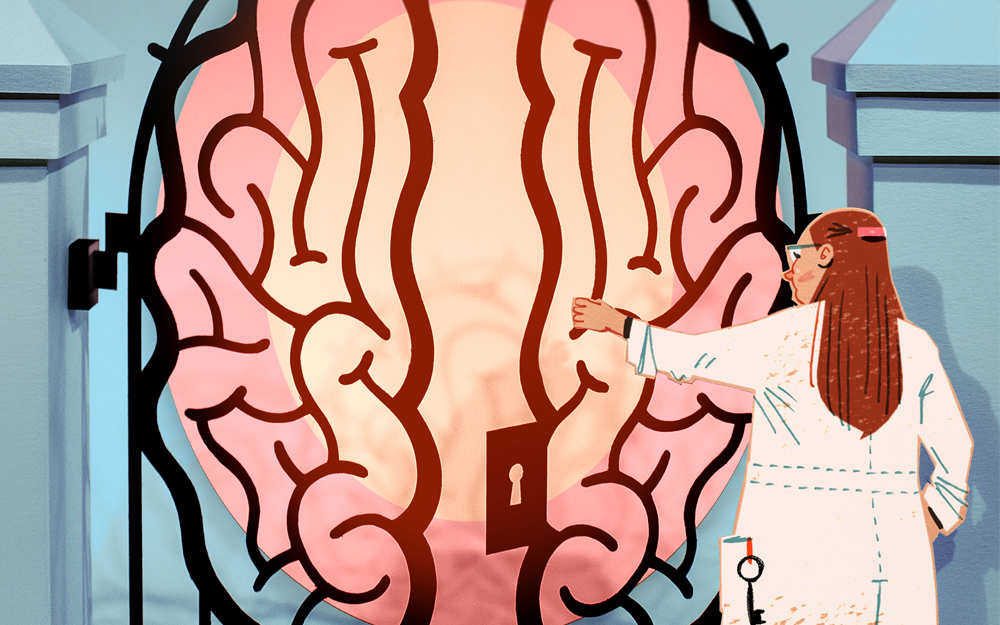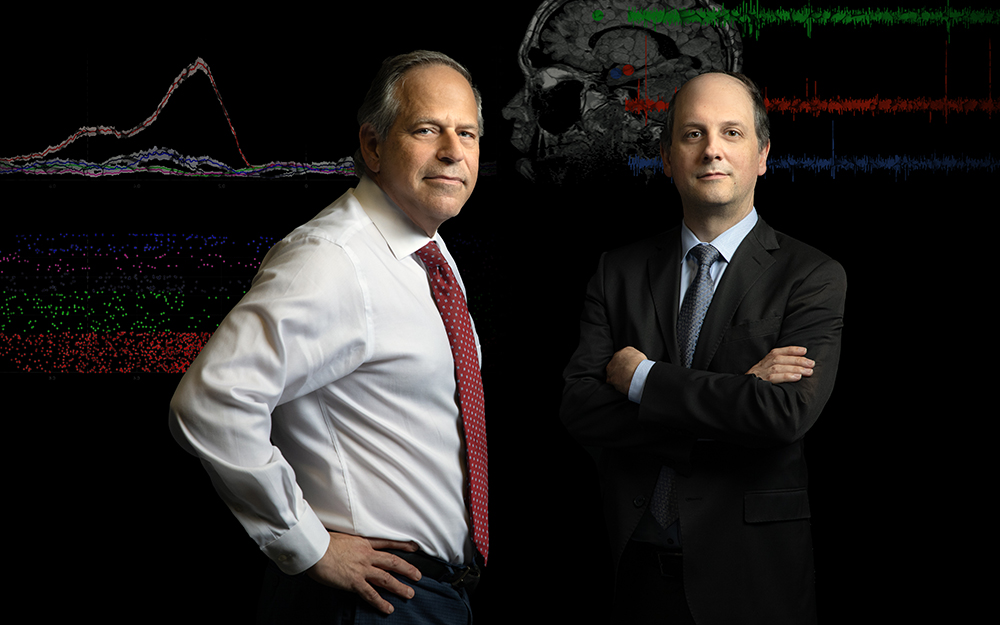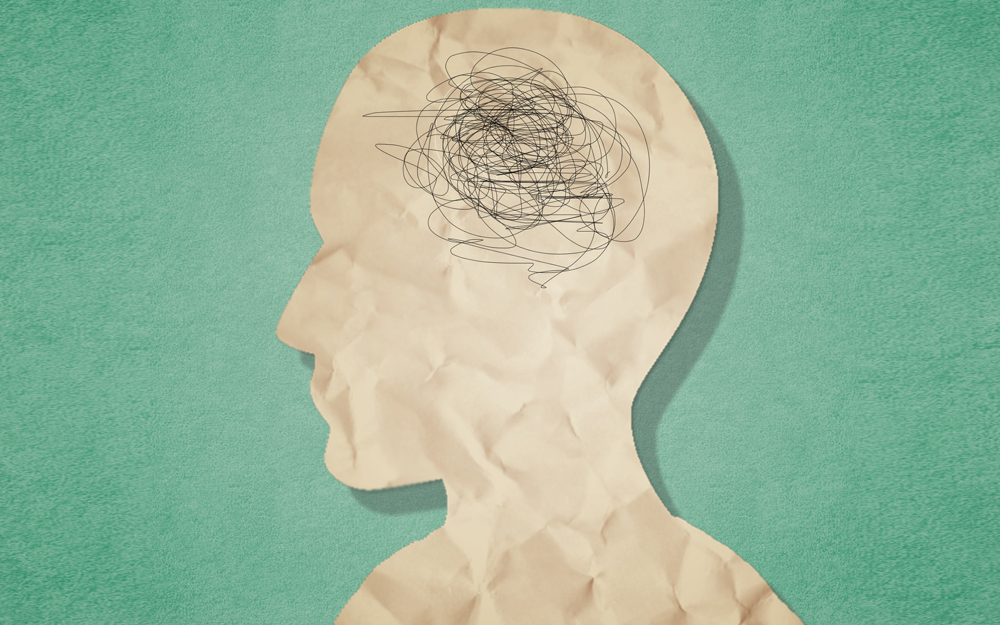Virtual Reality and the Brain-Body Connection
Date
April 5, 2023
Credits

Date
April 5, 2023
Credits
Medical providers featured in this article
In Brief
{{cta-block}}
In today’s rapidly evolving technological environment, a group of Cedars-Sinai investigators is exploring how virtual reality (VR) can play a role in treatment and help heal the body. Research into how this relatively new technology can be used in the healthcare space begins by asking the right questions, such as: How does VR affect the brain? How does the brain create measurable physiological changes in the body?
New evidence shows that VR can be used as a catalyst to teach the brain and the body to reduce pain without medication.
"Saying that VR works is like saying a syringe works. A syringe doesn’t work. It’s what’s loaded into that syringe that works for specific indications. VR is the same way. VR is just the headset—it’s a device. What makes it work is the software loaded onto it and that software’s target."
"The brain and the body are connected in one continuous, integrated, holistic system," says Brennan Spiegel, MD, the Dorothy and George Gourrich Chair in Digital Health Ethics, director of Health Services Research, and co-director of the Virtual Medicine Program at Cedars-Sinai.
"Before we can fully understand the mechanisms of what makes VR work, we must understand what the technology is teaching us about mind-body medicine."
Cedars-Sinai physicians and scientists are tackling the question, how exactly does VR work?
VR and the psychology of pain
Dr. Spiegel explains that pain management is at the center of much research on VR in medicine, with a goal of reducing patients’ opioid use. For example, RelieVRx—software developed by Cedars-Sinai partner AppliedVR—has recently been authorized by the Food and Drug Administration as a nonpharmacological option for treating chronic lower back pain.
Dr. Spiegel and psychiatrist Omer Liran, MD, co-director of the Virtual Medicine Program at Cedars-Sinai, not only have been studying the clinical effects of VR and its therapeutic benefits for managing pain, but they also have been developing proprietary VR software.
{{providers}}
"Dr. Liran is a doctor and a programmer," Dr. Spiegel says. "Therefore, we’ve been able to create environments in virtual reality that are optimized to improve human health and psychological wellbeing."
"Saying that VR works is like saying a syringe works," Dr. Liran says. "A syringe doesn’t work. It’s what’s loaded into that syringe that works for specific indications. VR is the same way. VR is just the headset—it’s a device. What makes it work is the software loaded onto it and that software’s target."
Dr. Liran—who developed the software for IBS/VR, which is a drug-free "virtual clinic" for treating irritable bowel syndrome (IBS)—explains that the mechanisms that make VR work psychologically include concepts referred to as "escape, distraction and exposure."
"Imagine that you’re a patient in the hospital and you’re in pain. Everything about that environment reminds you of your pain. You’re surrounded by four white walls, you have an IV line in your arm, and the nurses keep coming in to check on you," he says.
"Then, you put on a headset, and suddenly you’re on a beach or in a forest. A part of your brain believes that you’re actually there. In this relaxed state of mind and from a more therapeutic environment, you can learn to do breathing exercises or guided meditation."
Studies have shown that patients had lower heart rates and a reduced perception of pain while using IBS/VR. Dr. Liran stresses the importance of incorporating additional psychological therapies, such as cognitive behavioral therapy (CBT), for patients struggling with chronic conditions such as IBS.
VR and brain function
Wei Gao, PhD, focuses on neuroimaging—particularly MRI scans of brain function, development and diseases. "Naturally, there’s an interface between neuroimaging and VR-based pain therapy, given the brain’s central role in pain perception, processing and regulation," says Dr. Gao, director of Neuroimaging Research in the Department of Biomedical Sciences and the Biomedical Imaging Research Institute at Cedars-Sinai.
By applying advanced MRI techniques, Dr. Gao can identify changes in large-scale functional brain networks critically related to pain processing before and after the use of VR therapy. These functional networks include the executive control network for cognitive regulation, the salience network for salience event evaluation, the default mode network for internal thought processing and the dorsal attention network for top-down control of attention.
Immersive, 3D VR-based CBT is thought to aid in pain management through enhanced cognitive control and distraction, which are potentially realized through changes of the interaction patterns both among these four functional networks and between them and other pain-perception areas. By examining functional brain changes at both network and regional levels, Dr. Gao’s research has the potential to reveal the underlying brain mechanisms of how VR-based therapy works for pain reduction.
VR and the immune system response
"When you think about the human body, the brain, immune system and nervous system are everywhere," says Caroline Jefferies, PhD, associate professor of Medicine and Biomedical Sciences in the Kao Autoimmunity Institute and Kao Multispecialty Scleroderma Program and scientific director of the Center for Research in Women’s Health and Sex Differences at Cedars-Sinai. "Everything is connected. We can’t research one area of the body without the others."
Dr. Jefferies, who plans to study the mechanisms of VR’s interaction with the immune system, investigates disorders that cause inflammation in the bones, muscles, joints and internal organs. She began her VR research by posing the question: "Is the brain directing the immune system or is the immune system directing the brain? In reality, the two of them are interacting with each other," she says.
"My research on autoimmunity includes chronic disorders that cause enhanced sensitivity to pain. For example, if you touch a patient with fibromyalgia, their brain will process that as pain. The idea that VR could influence the immune system to reduce pain is really interesting to me."
Dr. Jefferies explains that with chronic inflammatory conditions, there’s an overactivation of both the brain and the immune system. In typical autoimmune disorders, the brain releases hormones that activate the immune system, causing inflammation and pain. Her hypothesis is that VR interrupts the perpetual cycle between the brain and the immune system.
"As an immunologist, I would like to see more research on using VR to treat patients with autoimmune diseases, which is such an unmet need," Dr. Jefferies says.
VR and the future
Investigation into the mechanisms that make VR an effective tool for reducing physical pain and psychological anxiety is in its infancy. However, the research being conducted at Cedars-Sinai demonstrates measurable proof that this new technology is worth exploring.







